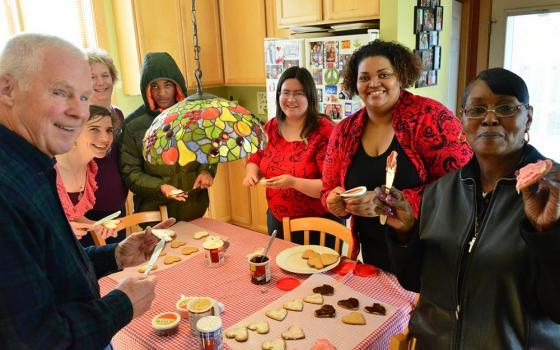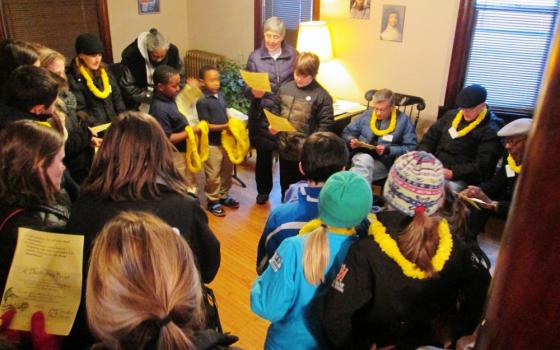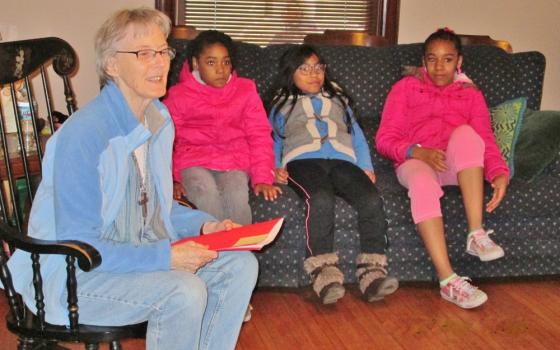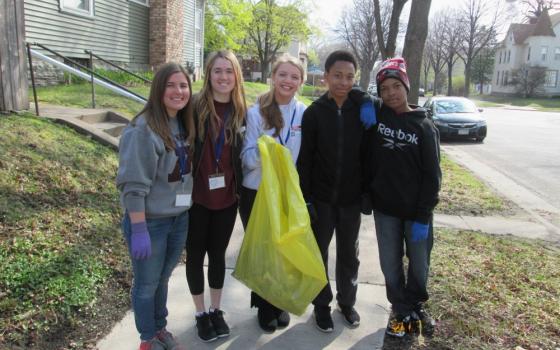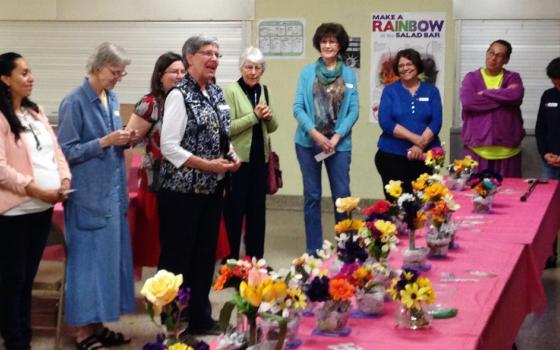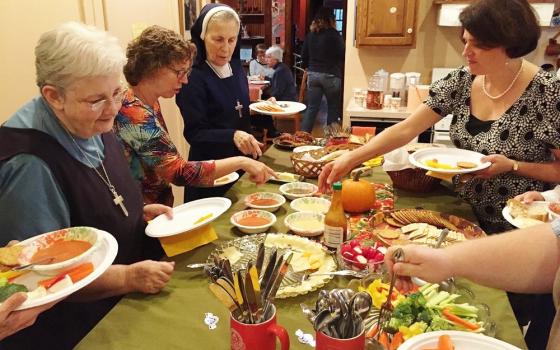On the north side of Minneapolis, a small but vibrant community of Visitation Sisters practices the discipline of contemplative prayer — and open their doors to neighbors and visitors who want to do the same.
The groundbreaking effort, now just over a quarter-century old, expresses the Visitation mission in an active, practical presence among the vulnerable and marginalized.
Problems like drug addiction and violence or the challenges associated with living as an immigrant or navigating the educational system are much more than issues for the community, said Sr. Katherine Mullin, who moved here 14 years ago. “Being among these people, the people who come to pray with us, has made such a great difference in the relationships we have with them. We have the privilege of being able to support them in prayer and friendship, sharing our spirituality with them.”
Members of a worldwide order, the Sisters of the Visitation trace their beginnings to the work of Frances de Sales and Jane de Chantal more than four centuries ago in France.
“For us, we are waking up and being awakened by people who come to us from all walks of life,” said Sr. Karen Mohan. “We in turn can share 400 years of charism with them. Life is about awakening, isn’t it?”
Visitation Monastery was a first for the U.S. Visitation nuns: The initiative was launched with a vote of the Second Federation of the Visitation Order in the United States of America, which traditionally had been affiliated with schools or with monasteries, though not strictly cloistered communities. In 1989 four sisters (there are now six) were commissioned by Minneapolis Archbishop John Roach to start the new community.
“All of us except for Sr. Suzanne [Homeyer] came from established monasteries around the country,” explained Sr. Mary Frances Reis, one of the founding sisters. “It was clear that the Lord didn’t want us to have an active ministry, like teaching in the community, but to get our agenda from the people while living a contemplative life.”
That very morning, added Mullin, approximately 25 people had gathered in their living room to celebrate the Eucharist and reflect on Scripture readings for the day.
In an adaptation of traditional monastic practice, the day begins with personal prayer (or, as Homeyer explained, a quick visit to the local YMCA). At seven, the sisters open their doors to community members who join them to chant the psalms, pray together or participate in the Eucharist.
But while the afternoon and evening include time for personal devotions and communal night prayer as well as the daily tasks that enables the group to function smoothly, the Visitation Monastery is characterized by openness to the needs of the neighborhood around it.
Morning prayers may be shaped by a particular concern, said Homeyer. The sisters operate a “door ministry” making themselves available when someone facing eviction or hunger needs a referral to an appropriate agency. When they first arrived on the north side, community members launched a “windsock ministry,” setting a multi-hued decoration out on their porch to let neighborhood children know that they were available for playtime, prayer and hospitality.
A nun’s schedule may be altered when a neighbor needs a ride to the doctor or there’s a community meeting. Born in Mexico, Sr. Mary Virginia Schmidt has spent time helping to move a local Guatemalan family through the immigration process, including accompanying them to meetings with lawyers and court appearances.
“We do live in the midst of chaos,” said Reis. “We bring the regularity of prayer and stability to people who have messy lives.”
Once a month, the sisters host a “Salesian Spirituality” program, a shared meal and educational presentation that concludes with night prayer to which all are invited. Seeking to enrich the local experience of Salesian spirituality and offer an urban haven, the sisters launched St. Jane House, a retreat center with an assortment of opportunities to experience and discuss the contemplative life.
Given that concern for neighborhood children has been a hallmark of the sister’s mission since they moved to the city, it’s not surprising, but still noteworthy, that they raise enough money to subsidize in whole or in part approximately 80 scholarships to send kids to a nearby camp every year.
The nuns, who have all had experience in the educational field, foster learning as much as they can, said Schmidt, noting that they also raise money to support scholarships for children attending local Catholic schools as well as college help for nursing students.
Upon returning from a 20-year stint working overseas, Brenda Lisenby has taken advantage of another monastery program, the six-month “monastic immersion experience,” to explore a possible call to the religious life. “It’s been a wonderful experience to be invited into the community. It’s deepened my prayer life, [but] it’s also a very active community . . . based on relationships, on being a neighbor. These women have encouraged me, and been Elizabeth to my Mary.”
Another woman, 29-year-old Monica Gneno, started to explore religious life with the community this fall.
“You might ask how could six people [plus Lisenby] do all of this. We can’t, so we don’t,” Mohan said. Instead, they are joined by others, who see the need and assist by offering to help carry out projects and provide financial support. “Sr. Mary Margaret [McKenzie] says that nobody could afford us, but people who want this kind of ministry and presence to exist, but can’t be here themselves, help . . . and enjoy how lives become beautiful.”
As they continue to discern their future, the sisters are creating a blueprint for another project: the formation of an intentional residential lay community. “The sisters’ call in this endeavor is to strengthen the legacy from St. Francis de Sales, that all are called to holiness,” McKenzie said. Their hope, she added, is that laypeople will pass on to others the faith and spirit of community that the sisters have tried to model.
Though nothing has been implemented so far, she described the response of those attending planning meetings as enthusiastic. Should such a group take root and flourish, whether the sisters are there or not, they will have make an indelible mark on their neighborhood — and fulfilled the mission born more than a quarter-century ago.
[Elizabeth Eisenstadt Evans is a religion columnist for Lancaster Newspapers, Inc., as well as a freelance writer.]
This is the second profile of a six-part series called Contemplative Communities.
Click here to see the introductory article and other profiles, as well as two related columns.
